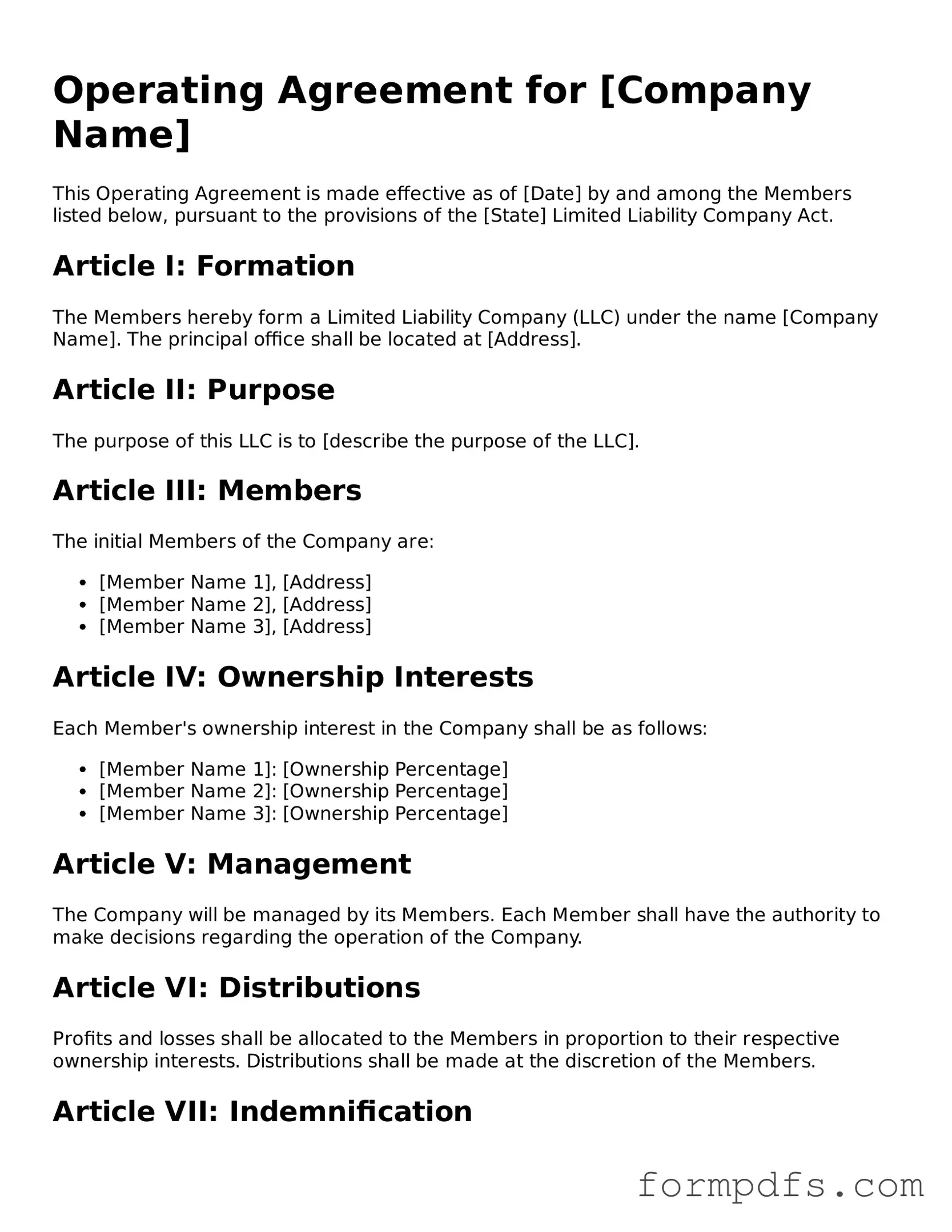What is an Operating Agreement?
An Operating Agreement is a legal document that outlines the management structure and operating procedures of a limited liability company (LLC). It serves as a guide for how the LLC will function and details the rights and responsibilities of its members. This agreement helps prevent misunderstandings and disputes among members by clearly defining roles and expectations.
Why is an Operating Agreement important?
This document is crucial for several reasons. First, it provides clarity about the ownership and management of the LLC. Second, it can protect the members' personal assets by reinforcing the limited liability status of the business. Lastly, having an Operating Agreement can help resolve disputes and provide a roadmap for decision-making, which is especially important in times of conflict.
Do all LLCs need an Operating Agreement?
While not all states require an Operating Agreement, it is highly recommended for every LLC. Even if your state does not mandate it, having an Operating Agreement can help establish the legitimacy of your business and provide a clear framework for operations. Without one, state laws will dictate how your LLC is managed, which may not align with the members' intentions.
What should be included in an Operating Agreement?
An Operating Agreement typically includes several key components. These may consist of the LLC's name and purpose, the names of the members, their ownership percentages, management structure, voting rights, and procedures for adding or removing members. Additionally, it should outline how profits and losses will be distributed and the process for dissolving the LLC if necessary.
Can an Operating Agreement be changed?
Yes, an Operating Agreement can be amended. It is important for members to agree on any changes, and the process for making amendments should be clearly outlined in the original agreement. Keeping the Operating Agreement updated ensures that it reflects the current intentions and agreements of the members, which can help avoid future conflicts.
How do I create an Operating Agreement?
Creating an Operating Agreement can be done in several ways. Members can draft one from scratch, use templates available online, or consult with a legal professional for assistance. It is important to ensure that the agreement meets state requirements and accurately reflects the members' intentions. Having all members review and sign the document is essential for its validity.
What happens if there is no Operating Agreement?
If an LLC does not have an Operating Agreement, it will be governed by the default rules set by the state. These rules may not align with the members' preferences and can lead to unexpected outcomes. Without a clear agreement, members may face challenges in decision-making, profit distribution, and conflict resolution, which can ultimately jeopardize the business's success.
